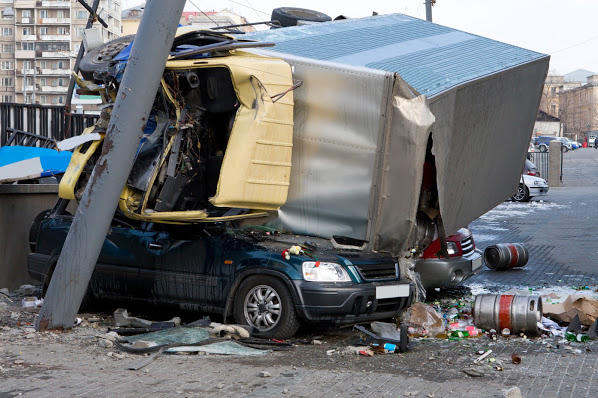If you want to pursue auto accident compensation after a multi-vehicle wreck, you may need to prove the accident’s cause. That way, you will identify the right defendant and connect their actions to your injuries. Below are some of the common risk factors for pileup accidents. If you are in an accident like this call a St. Louis car accident lawyer today.
Related Links
- 11 Common Causes Of Truck Accidents In St. Louis
- Holiday Accident Injury Risks: What Drivers Should Know
- St. Louis Rear End Accident Lawyers
- Are Truck Drivers Responsible For Damages In The Case Of An Accident
- Why Vehicle Inspections Are Crucial To Car Accident Injury Cases

Tailgating
Tailgating is the practice of following too closely behind another vehicle. The safe distance between you and the car in front is not a fixed parameter. Rather, it depends on different factors, such as:
- Your speed
- Prevailing weather
- Road conditions
- Visibility
Under average driving conditions, you should allow three seconds of driving between you and the car in front of you. Otherwise, you might hit the car in front if they unexpectedly stop or slow down.
The danger of a pileup increases if multiple vehicles are tailgating each other on the road. If one of the vehicles abruptly stops, the cars behind it are likely to hit each other’s rear in a chain reaction accident.
Speeding
Your car’s speed determines the braking distance and time. For example, driving at 30 mph, you will need 87 feet to stop (44 feet for reaction and 45 feet for braking). The distance increases to 268 feet (88 feet reaction and 180 feet braking) while driving at 60 mph. Thus, you are likely to travel a long distance at high speed and hit other cars before stopping.
Traffic Density
Some road sections are likely to have more cars than others. Examples include:
- Junctions
- Urban roads
- Traffic circles or roundabouts
Such areas are also likely to have cars moving in different directions. An accident in such a location can end in a pileup simply because of the high vehicle density.
Bad Weather
Poor weather conditions increase the risk of pileups in two main ways. First, some elements of weather decrease visibility. For example, you might not notice a two-car accident while driving in a heavy downpour. This weather condition increases your risk of crashing into the two cars.
Secondly, poor weather conditions can also increase braking distance and time. For example, rain or snow makes the road slippery and reduces traction between the road’s surface and your car’s tires. The increased braking time means you might not stop in time even after noticing a collision ahead.
Distractions
Many pileups start as a two-car accident and then turn into a pileup when other vehicles hit the first victims. You can only avoid hitting crashed cars if you spot them in time to stop. That might not be the case if you are distracted.
Driving distractions come in various forms. Examples include:
- Talking on the phone
- Eating
- Playing with a child or pet
- Rubbernecking (looking at an accident scene instead of focusing on the road ahead)
Driving distractions mean you might not spot road emergencies in time.
Brake Failure
Pileups also occur if a car suffers a mechanical failure and cannot stop in time. Brake failures are notorious for this. Say you are driving at normal highway speeds and notice an accident ahead. You should be able to stop in time and avoid a pileup with functional brakes, but an unexpected brake failure might thwart your plans.
Large Trucks
Lastly, an accident involving large and heavy vehicles is likely to turn into a pileup for multiple reasons. For one, a large truck requires more time and distance to stop, which means it can hit other cars before coming to a stop. Secondly, a truck’s size means it occupies a large area of the road, which increases the number of vehicles it can hit if it overturns.
Cantor Injury Law has the experience and skills to pursue your pileup accident case. Contact us for a consultation, and we will help you determine the accident’s cause, identify the defendant, and pursue your damages. Also, if you have any more questions about the common risk factors for pileup accidents.
FAQs: Common Risk Factors For Pileup Accidents
Q: What Is Tailgating, And How Does It Contribute To Pileup Accidents?
A: Tailgating refers to following another vehicle too closely. If multiple vehicles are tailgating each other and one abruptly stops, it can cause a chain reaction accident where the cars behind collide into each other’s rear, leading to a pileup.
Q: How Does Speeding Increase The Risk Of Pileup Accidents?
A: Speeding reduces the time and distance required to stop a vehicle. At higher speeds, it takes longer to react and brake, increasing the likelihood of hitting other cars before coming to a stop. This can contribute to pileup accidents.
Q: How Does Traffic Density Contribute To Pileup Accidents?
A: Areas with high traffic density, such as junctions, urban roads, or traffic circles, are more prone to pile-up accidents. The presence of many cars moving in different directions increases the risk of multiple collisions and subsequent pileups.
Q: How Does Bad Weather Contribute To Pileup Accidents?
A: Poor weather conditions decrease visibility and increase braking distance and time. Reduced visibility can lead to not noticing an existing accident, while slippery roads make it harder to stop in time after recognizing a collision ahead, increasing the risk of pileup accidents.
Q: What Role Do Distractions Play In Pileup Accidents?
A: Driving distractions, such as phone use, eating, interacting with children or pets, or rubbernecking, divert attention from the road. Being distracted reduces the chances of spotting road emergencies in time, including accidents, and can contribute to pileup accidents.
Q: How Can Brake Failure Lead To Pileup Accidents?
A: If a vehicle experiences brake failure, it may be unable to stop in time to avoid a collision, especially in situations where an accident has already occurred. Brake failure can thwart a driver’s attempt to prevent a pileup, as they may not be able to stop their vehicle as intended.
Q: Why Are Accidents Involving Large Trucks More Likely To Result In Pileups?
A: Large trucks require more time and distance to come to a complete stop due to their size and weight. If a truck is involved in an accident, it may collide with multiple vehicles before it can fully stop. Additionally, the size of a truck occupies a larger portion of the road, increasing the potential for multiple collisions and a pileup.
